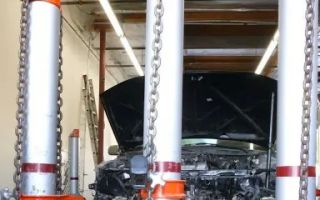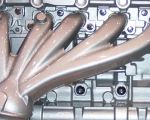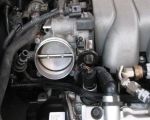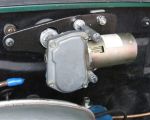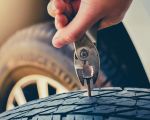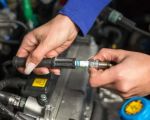How to Fix a Car with a Slow Puncture in the Tire
- 1-Recognizing a Slow Puncture
- 2-Immediate Steps to Take
- 3-Gathering Necessary Tools
- 4-Step-by-Step Repair Process
- 5-Preventing Future Punctures
- 6-When to Seek Professional Help
- 7-Conclusion and Next Steps
1-Recognizing a Slow Puncture
As a car owner, I've had my fair share of tire troubles. One of the trickiest issues to detect is a slow puncture. Unlike a sudden flat tire, a slow puncture gradually deflates your tire over time. You might notice your tire pressure warning light coming on intermittently, or your car handling differently, especially when cornering or braking.
A slow puncture can be caused by a small object, like a nail or screw, embedded in the tire tread. It can also result from a faulty valve stem or a small cut in the tire sidewall. Regularly checking your tire pressure can help you catch a slow puncture early before it becomes a bigger problem.

MR. TIRE INC.
2078 New York Ave, Huntington Station, NY 11746, USA
2-Immediate Steps to Take
When you suspect a slow puncture, the first thing to do is to find a safe place to pull over. Driving on an underinflated tire can cause excessive wear and even lead to a blowout. Once you're safely off the road, you can inspect the tire visually for any obvious signs of damage.
If you have a portable tire inflator, you can temporarily reinflate the tire to get to a safer location or a service station. However, this is only a temporary fix, and you should avoid driving long distances or at high speeds until the tire is properly repaired.

MR. TIRE INC.
2078 New York Ave, Huntington Station, NY 11746, USA
3-Gathering Necessary Tools
To fix a slow puncture, you'll need a few essential tools:
- Spare Tire or Tire Plug Kit: If you have a spare tire, you can replace the damaged tire temporarily. Alternatively, a tire plug kit can be used to seal small punctures.
- Jack and Lug Wrench: These are necessary for lifting the car and removing the wheel.
- Flashlight: Useful for inspecting the tire in low-light conditions.
- Gloves: To protect your hands while working on the tire.
4-Step-by-Step Repair Process
Here's a step-by-step guide to fixing a slow puncture:
- Locate the Puncture: Use a flashlight to carefully inspect the tire for any foreign objects or damage. You might need to rotate the tire to find the puncture.
- Remove the Object: If you find a nail or screw, use pliers to carefully remove it. Be cautious not to enlarge the puncture.
- Apply the Tire Plug: Follow the instructions on your tire plug kit to insert the plug into the puncture. This usually involves using a tool to insert the plug and then pulling it back out, leaving the plug in place.
- Inflate the Tire: Use a portable inflator or visit a gas station to reinflate the tire to the recommended pressure.
- Check for Leaks: Apply soapy water to the repaired area and look for bubbles, which indicate air leaks. If you see bubbles, you may need to reapply the plug or seek professional help.
5-Preventing Future Punctures
Preventing future punctures involves regular tire maintenance and careful driving:
- Avoid Road Hazards: Be cautious of potholes, debris, and other road hazards that can cause punctures.
- Maintain Proper Tire Pressure: Regularly check your tire pressure and inflate as needed. Properly inflated tires are less susceptible to punctures and wear evenly.
- Inspect Tires Regularly: Visually inspect your tires for signs of wear or damage. Catching issues early can prevent more significant problems down the road.
6-When to Seek Professional Help
While a tire plug kit can be a quick fix, it's not a permanent solution. If the puncture is large or located on the tire sidewall, it's best to seek professional help. A tire professional can patch the tire from the inside or recommend a replacement if the damage is too extensive.
Additionally, if you're not comfortable performing the repair yourself, don't hesitate to take your car to a trusted mechanic. They have the tools and expertise to ensure the repair is done correctly and safely.
7-Conclusion and Next Steps
Fixing a slow puncture can be a straightforward process with the right tools and knowledge. By recognizing the signs early and taking immediate action, you can prevent more significant tire damage and ensure your safety on the road.
However, it's essential to know when to seek professional help. If you're ever unsure about the repair process or the extent of the damage, it's always better to err on the side of caution and consult a tire professional.
Ready to take control of your tire maintenance? Visit our website for more tips and expert advice on keeping your tires in top condition.













